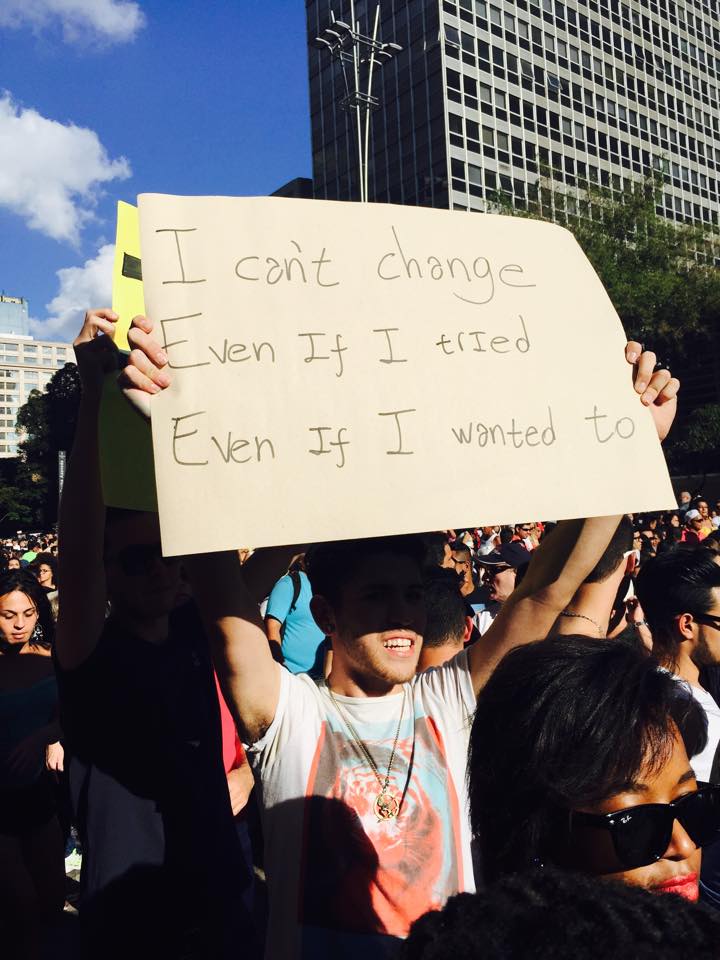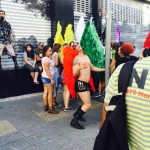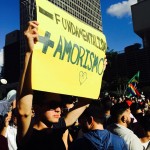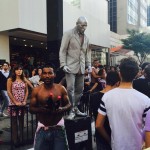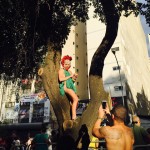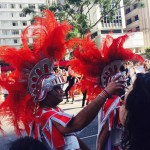June 7, 2015
By: Khadeeja McSeed
We began our day at 9 am. We went to the Catholic Mass at São Bento Monastery. Attending this church was an interesting experience because this first part of the service was spoken in Latin while the second half was spoken in Portuguese along with Gregorian chants. Within the church, there were statues of the disciples and in the hands of these disciples were the weapons by which they were killed. The way the congregation was set up was intriguing because church goers would sit in the front of the church and throughout the pews from front to back while the other people who did not fit stood behind and on each side of the pews. The service was about an hour and fifteen minutes and throughout the entire service there were a numerous amount of incense that fogged the front of the church and gradually made its way to the back of the church.
After the service ended, we then headed to lunch which incorporated a mini buffet with a main meat course. Once we finished supplying our bodies with energy, we headed for the metro where we would head to our next activity for the day. We attended the São Paulo Gay Pride Parade. This was the most exhilarating experience because everyone enjoyed the parade and there was a different atmosphere that the parade created around the topic of being gay in a mostly conservative country. This parade reminded me of one of the lessons that we had in Rio in particular by Dora, she said that transgendered individuals are perceived to have a hypersexualized behavior especially those who express their chosen gender, and this stereotype does not represent all transgendered individuals. The gay pride parade in a sense is a safe haven for queer individuals to embrace and express their sexual identity. James N. Green, author of Beyond Carnival: Male Homosexuality in Twentieth- Century Brazil, discusses the history of homosexuality and how homosexual individuals migrated to Rio and São Paulo but also the conceptualization of what it means to be homosexual. Although Carnival and the gay pride parade gives off an ambiguous stance on homosexuality, there seems to still be opposition against how a homosexual individual should act. Green states, “The effeminate homosexual, or bicha, acts as a marker that differentiates between his own “deviant” behavior and “normal” masculine behavior of a “real” man. By the nature of its binary opposition to the norm, the social stereotype of the “passive” and womanly man defines the “active” and “virile” man” (Green 16). The relationship between a man and his sexuality would be defined by if his behavior is passive or not. It seems as though Rio and São Paulo creates an environment with the parade where homosexual individuals are able to express themselves despite their passive or masculine behaviors in a country where they normally cannot. Paulo Freire’s notion about consciousness when applied to the gay pride parade, shows that the parade is raising awareness about different sexualities however, after the parade, these individuals whose sexual orientation is not heteronormative is suppressed and continues to be suppressed until the socially sanctioned times of transgression such as Carnival or the gay pride parade.

